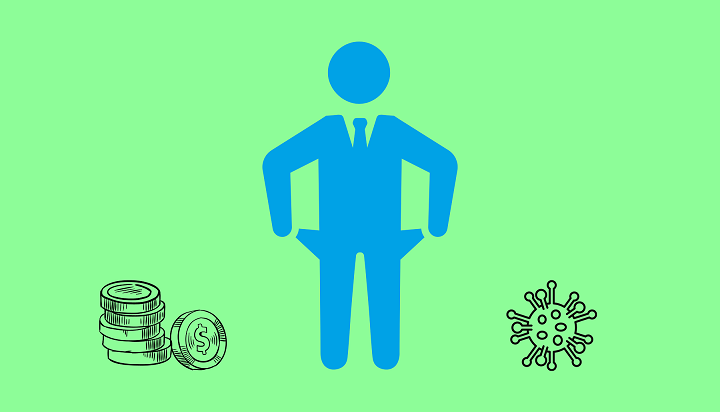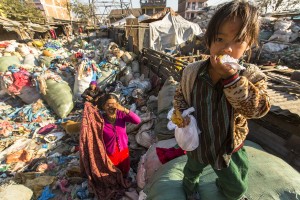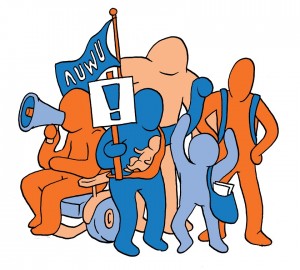Covid-19 and Eradication of Poverty
The World Bank Group, in its recent biennial report “Poverty and Shared Prosperity 2020: Reversals of Fortune,” has predicted that between 88 million and 115 million people could fall back to poverty line in 2020 due to Covid-19. It was becoming increasingly unrealistic to expect that the goal of reducing extreme poverty to less than 3 percent would be attained at the global level by 2030, unless widespread and sustained improvement in inclusive economic growth is attained. The effects of this slowdown have been apparent for some time, and have been increasingly exacerbated by the impacts of armed conflicts and climate change, but these factors have now been overwhelmed by Covid-19, and its associated global economic crisis. Current projections suggest that the Covid-19 pandemic will not merely slow global poverty reduction further, but will reverse the trend in much of the world: the number of people living in extreme poverty will increase this year by as much as 115 million.
Poverty affects human beings in a variety of ways and is a stumbling block for those badly trapped in it to leading a normal and productive life. Its severity can be gauged from the fact that poverty-alleviation has always been the top priority of the experts while devising the development policies. To reduce poverty by half by 2015 was the first of the overall eight of the Millennium Development Goals (MDGs), and then ending poverty in all its forms and dimensions by 2030 was again the top priority of the United Nations and its member states in the Sustainable Development Goals (SDGs) adopted in 2015.
According to the UN, 746 million people worldwide still live in extreme poverty. The overwhelming majority of the people living on less than $1.90 a day belongs to two regions: South Asia and Sub-Saharan Africa. Almost 84 percent of the world’s poor live in these regions, according to the World Bank. According to the UN there are 30 million children growing poor in the world’s richest countries. Half of the people living in poverty are under age 18. If the young people are not taken care of, it will be catastrophic.
The rate of poverty in Pakistan is alarmingly high. According to the multidimensional poverty index, 38.8 percent people are poor in the country, and it was only in 2016 that Pakistan gave its official figure on poverty, first time since 2005-06. It is interesting to note that Pakistan has not set a poverty line of its own since 2001. After the Covid-19 pandemic has badly hit the vulnerable sections of the society already facing the brunt of the slow economic growth, Pakistan needs to come up with fresh figures of poverty as the reliable data is instrumental in formulating well-directed policies.
Pakistan failed to achieve the most important goal of the MDGs of reducing poverty by half by 2015. Had we achieved it, poverty rate would have been less than 20 percent. The first half of the last decade witnessed positive signs of reducing poverty. However the same could not be retained and the later developments reversed the process. The poverty estimates of 2015-16 show that 24 percent of the people are living below poverty line and another 20 percent of the total population was identified as vulnerable, who could fall into poverty due to any social or economic shock. Amidst the Covid-19 pandemic, it is safe to say now that almost 40 percent of the population is badly trapped in vicious circle of meeting their both ends meet with constrained access to health and educational facilities. When it comes to eradicating poverty in Pakistan, the following issues need to be taken into consideration by the policymakers.
Firstly, our economic growth is one of the lowest in the region, and the plight of the poor and the under-privileged is getting worse with each passing day. The experts have maintained that poverty starts declining when the growth rate exceeds 6 percent. China’s example of reduction of poverty reflects that there is strong correlation between economic growth and poverty-reduction. Pakistan has to cover a long distance to attain the stability that can play an instrumental role in bringing an end to this menace. Till then, the government needs to extend the scope of the social safety nets so that the sufferings of the poor can be mitigated to the maximum possible extent.
Secondly, majority of our population lives in villages and is connected with agriculture in one way or the other. Farmers have been affected badly, recently due to indifference of the government to the most important sector of the economy. Covid-19 has badly affected small farmers. Without bringing revolutionary changes in agriculture and boosting rural income, poverty cannot be reduced. Rather if the current trends of agriculture-deterioration continue, there is all likelihood that we may witness manifold increase in poverty in near future.
Thirdly, we are the fifth most populous country in the world, and majority of the population is composed of the youth. This huge human resource can either be a blessing or a curse for us. According to a UNDP report, 64 percent of the total population is below the age of 30. If we leave them uneducated and trapped in poverty, it is going to be catastrophic for the country. On the contrary, if we help them to come out of poverty by educating them, this will turn out to be a blessing for Pakistan. The government must devise policies to engage youth in a constructive manner lest they should be consumed by poverty. Given the situation created by Covid-19, the government needs to come up with overarching policies aimed at educating the youth.
Fourthly, there is erosion of key institutions—civil service, police and judiciary—in the country. These institutions provide basic services to the people. The erosion and decay of these institutions have made the basic service inaccessible for the under-privileged and the poor segments of the society. Without efficient service delivery, eradication of poverty would remain a pipedream. Social and political milieu is anti-poor. If these institutions are not improved, the poor segments of the society will further be alienated. We, unfortunately, are far away from making the institutions responsive and efficient.
Lastly, microfinance initiatives both by the public sector and individual philanthropists can be of valuable help in our fight against poverty. The Ehsaas Programme and institutions in private philanthropy like Akhuwat are rendering valuable services to the poorest of the poor. A study in private philanthropy in Pakistan shows that individuals and the organizations contribute around $ 2 billion annually for various causes. The public-sector social safety nets like Zakat and Bait -ul-Mal are not effective. If managed properly, they can play their due, significant role. The government needs to improve and facilitate these institutions to give relief to the segments badly-hit by the pandemic. The Ehsaas Programme is doing fine, and the government needs to ensure that the poorest of the poor should not be left behind.
For achieving the SDGs on poverty and addressing the grievances of the people badly hit by the Covid-19 pandemic, the government needs to be responsive by setting priorities afresh. An indigenous anti-poverty campaign should be launched by taking all the stakeholders on board. The government will have to raise itself above self-centred policies of gaining short-term benefits of investing heavily in the projects for political gains. It is high time the government improved the plight of its people by taking steps in line with the SDGs.
The author is a Chevening Scholar and has studied International Development at the University of Manchester.
 Jahangir's World Times First Comprehensive Magazine for students/teachers of competitive exams and general readers as well.
Jahangir's World Times First Comprehensive Magazine for students/teachers of competitive exams and general readers as well.



